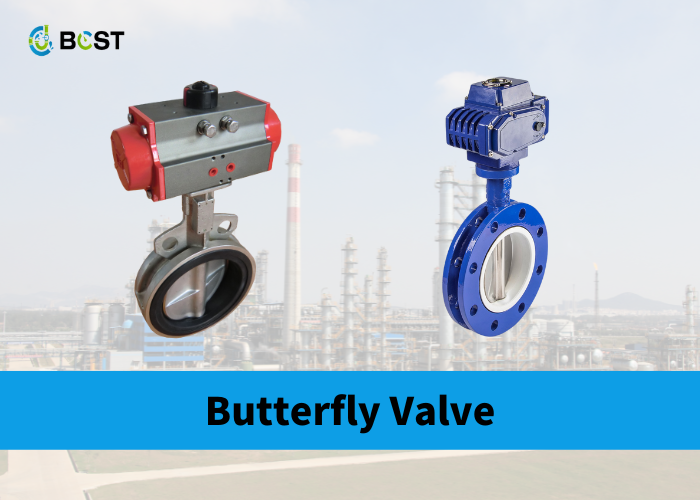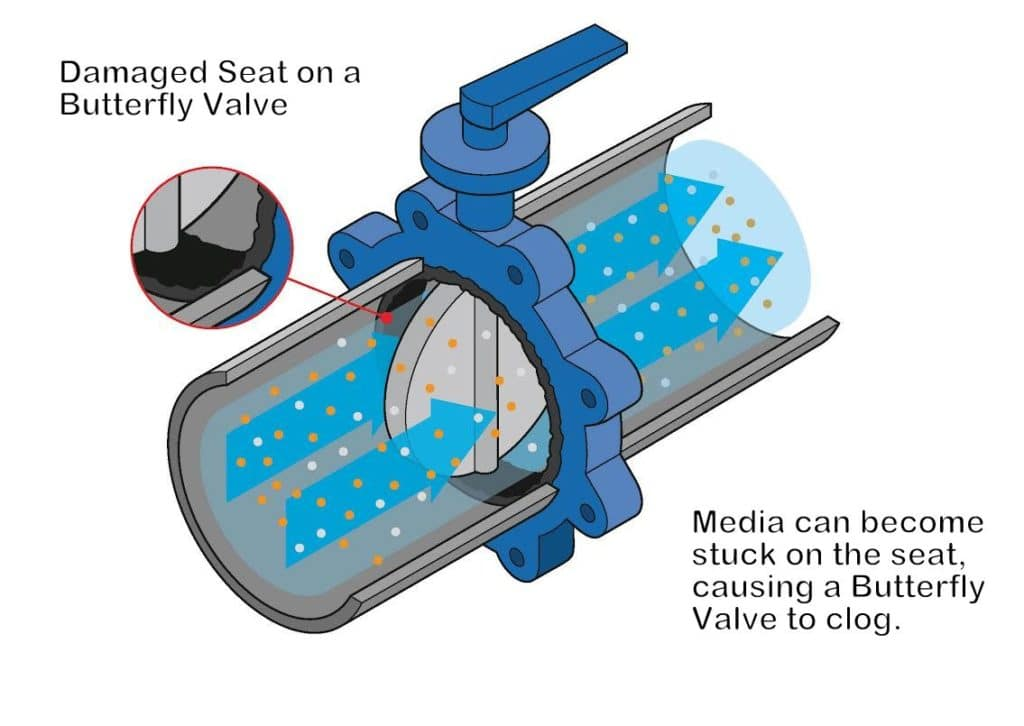
Butterfly valves are essential in various industrial applications, offering versatile control over fluid flow. They are known for their simple yet effective design, which includes a disc (or “butterfly”) that rotates to regulate the flow of liquids or gases. However, like any mechanical system, butterfly valves are not immune to wear and tear, and one common issue that plagues them is seat damage. In this blog, we will delve into the causes of butterfly valve seat damage, exploring the factors leading to this problem and discussing potential solutions to extend the valve’s lifespan and maintain efficient operations.
Understanding the factors contributing to butterfly valve seat damage is crucial for those involved in industries where these valves are heavily utilized. By addressing the root causes and implementing preventative measures, you can ensure your butterfly valves’ continued reliability and performance. So, let’s take a closer look at what causes butterfly valve seat damage.
What Causes Butterfly Valve Seat Damage?
The butterfly valve seat, also known as the sealing ring, is a component connected to the butterfly valve’s sealing ability and the most severely corroded and eroded point in the pipeline by the medium. Damage to the butterfly valve’s seat will result in leakage, and if the leaking is severe, it will even pose a big safety danger and disrupt our job. What are the causes of the butterfly valve seat damage?
§ The processing quality of the butterfly valve seat is poor, and the process is not stringent enough, resulting in fractures, pores, and uneven hardness on the sealing ring.
§ It is caused by inappropriate butterfly valve selection or operation. Failure to correctly select the butterfly valve model according to the actual working environment resulted in the butterfly valve not conforming to the working conditions and the valve seat sealing ring being damaged.
§ The butterfly valve is installed randomly, or the maintenance is poor, resulting in valve seat deterioration. Before installing the butterfly valve, the inside of the valve body and the pipeline are not cleaned, resulting in contaminants in the pipeline that damage the butterfly valve seat. Then there’s the failure to repair the butterfly valve on time, which maintains the butterfly valve unhealthy and prematurely ruins the butterfly valve’s seat sealing ring.
§ Under no current conditions, the chemical corrosion of the butterfly valve seat medium, the medium surrounding the butterfly valve seat sealing ring, directly interacts with the butterfly valve seat and corrodes the valve seat.
§ The erosion of the medium in the butterfly valve seat’s pipeline, the butterfly valve’s seat sealing ring is located inside the pipeline, and the erosion of the valve seat is continuous. These media have suspended particles, and some are corrosive. The sealing surface will be damaged when such a medium erodes the valve seat.
§ Mechanical damage to the butterfly valve seat. Every time the butterfly plate is opened and closed, it rubs against the seat of the butterfly valve, and the damage to the sealing surface increases over time.
§ Electrochemical corrosion of the butterfly valve seat, contact between the sealing surfaces, contact between the sealing ring and the closing body, and the valve body, as well as the medium concentration difference, oxygen concentration difference, and so on, will cause a potential difference and electrochemical corrosion, resulting in corroded valve seat sealing ring on the anode side.
§ Fatigue damage of butterfly valve seat: The butterfly valve seat has its own service life, especially the valve seat of the soft sealing butterfly valve. Long-term service life is limited; it ages easily, and the sealing surface has fractures and delamination, resulting in poor sealing performance.

Tips on How to Prevent Butterfly Valve Seat Damage
Preventing butterfly valve seat damage is crucial for efficient operations in various industrial applications. Here are some solutions and preventative measures to help you avoid or mitigate butterfly valve seat damage:
§ Proper installation: Ensure the valve is installed correctly, following the manufacturer’s guidelines. Improper installation can lead to misalignment and excessive stress on the valve seat.
§ Regular maintenance: Implement a routine schedule to inspect and service the valve. This includes checking for wear and tear, ensuring that components are properly lubricated, and addressing any issues promptly.
§ Select the right material: Choose valve materials resistant to the specific media being handled. Consider using specialized materials that can withstand the conditions of corrosive or abrasive substances.
§ Control flow velocity: Avoid excessive flow velocities, which can cause erosion and damage to the valve seat. Properly size the valve to match the expected flow rates and pressure requirements.
§ Use proper gaskets and seals: Ensure the gaskets and seals are high quality and suitable for the intended service conditions. Replace them when necessary to prevent leakage that can lead to seat damage.
§ Temperature control: Maintain proper temperature control within the system. Extreme temperatures can weaken the valve seat material and lead to cracking or deterioration.
§ Operate within the valve’s limits: Be aware of the valve’s maximum pressure and temperature limits and operate the valve within these boundaries. Exceeding these limits can cause seat damage and reduce the valve’s lifespan.
§ Control cavitation and water hammer: Address issues like cavitation and water hammer through proper system design and pressure-reducing devices. These phenomena can cause severe damage to valve seats.
§ Regularly inspect for wear: Inspect the valve seat for signs of wear, such as erosion, pitting, or scoring. Early detection can prevent minor issues from turning into major problems.
§ Implement maintenance protocols: Develop and implement maintenance protocols that specify inspection intervals and the replacement of critical components, including the valve seat. Keep accurate records of maintenance activities.
§ Invest in quality valves: Purchase high-quality butterfly valves from reputable manufacturers. Quality valves are less likely to experience premature wear and damage.
§ Train operators: Ensure personnel responsible for operating the valves are trained in proper usage, maintenance, and troubleshooting. Well-informed operators can help prevent operational errors that may lead to seat damage.
§ Use soft-seated valves: In applications with tight shut-off consider using soft-seated butterfly valves. These valves feature resilient materials that provide better sealing and reduce wear on the seat.
By following these preventative measures and regularly monitoring the condition of your butterfly valves, you can significantly reduce the risk of seat damage and extend the lifespan of these critical components in your industrial processes.






